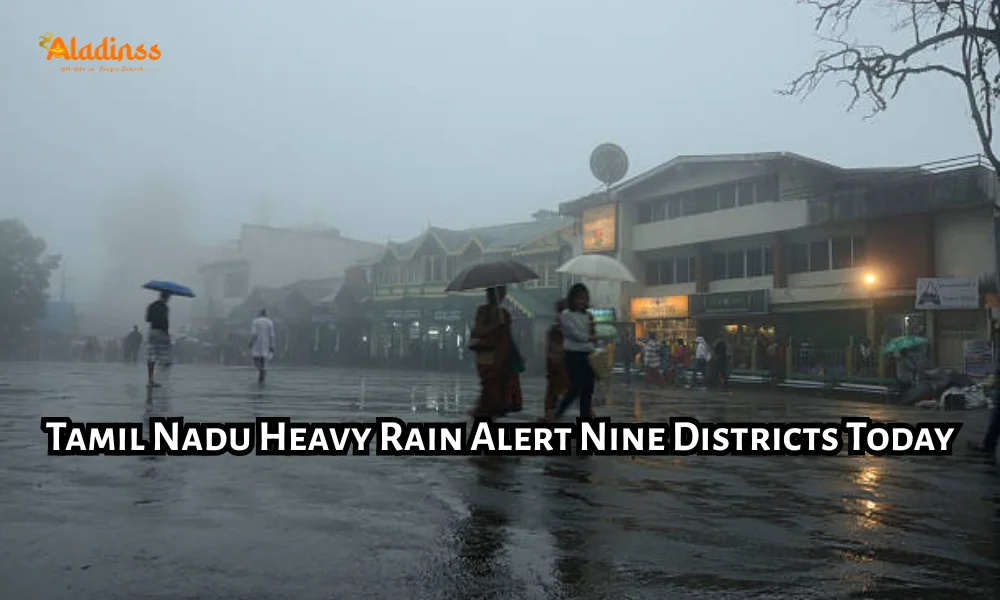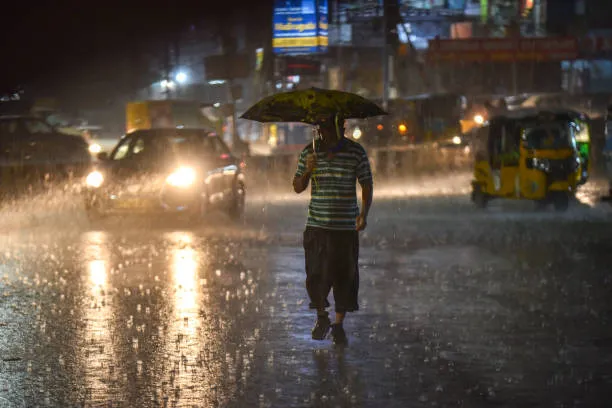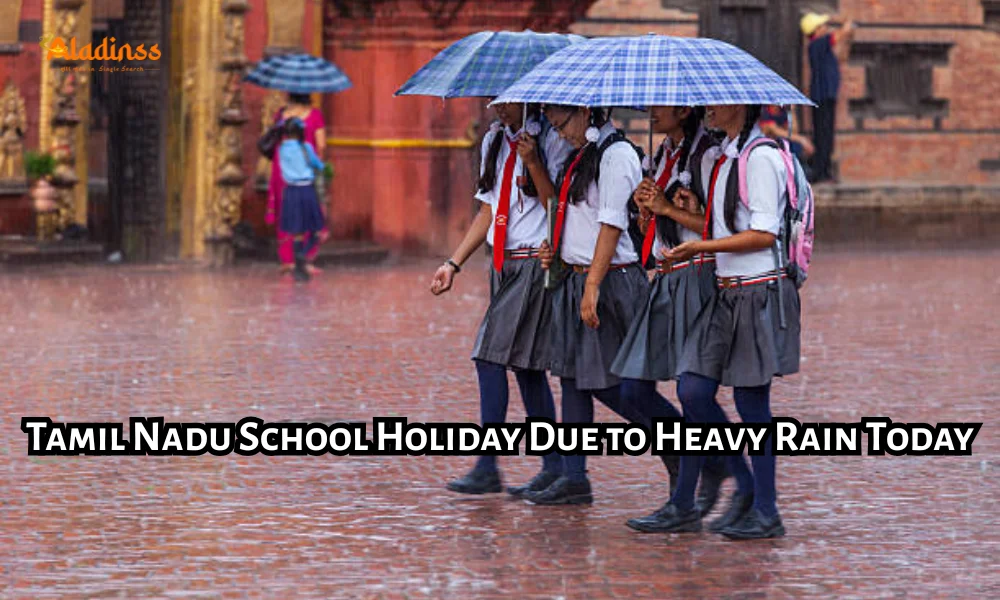Tamil Nadu Heavy Rain Alert Nine Districts Today

Tamil Nadu Braces for Heavy Rain: 9 Districts on Alert Today
Residents in Tamil Nadu are gearing up for intense weather as the Regional Meteorological Centre in Chennai forecasts heavy rain across nine key districts today. This downpour, driven by persistent atmospheric circulations over the states interior regions, signals a wet spell that could extend through November 11. Areas like Ariyalur, Perambalur, Tiruchirappalli, Kallakurichi, Tiruvannamalai, Salem, Dharmapuri, Krishnagiri, and Tirupattur are prime spots for the heaviest showers, urging locals to prepare for potential disruptions in daily life and travel.
The alert comes amid a broader pattern of unsettled conditions in southern India, where monsoon remnants and low-pressure systems continue to stir up moisture-laden clouds. For Chennai, the outlook is milder with partly cloudy skies and chances of light to moderate rain in isolated pockets, offering a brief respite from the deluge elsewhere. This heavy rain in Tamil Nadu not only tests infrastructure but also highlights the states vulnerability to seasonal weather shifts.
Looking ahead, the forecast extends the caution to additional districts tomorrow, including Ramanathapuram, Sivaganga, Virudhunagar, Madurai, Theni, and Dindigul, where similar heavy spells are expected. These predictions stem from expert analysis of wind patterns and humidity levels, emphasizing the need for proactive measures against flooding and waterlogging.

Weather Patterns Fueling the Downpour
The current bout of heavy rain in Tamil Nadu is largely attributed to an active upper-air circulation lingering over the interior Tamil Nadu and neighboring Andhra Pradesh. Meteorologists note that this system draws in southwest monsoon moisture, leading to convective clouds that unleash torrential rains. Such conditions are typical for this time of year, as the retreating monsoon interacts with local topography, particularly in the Eastern Ghats regions affecting districts like Salem and Dharmapuri.
In parallel, a deep depression that formed earlier in the Bay of Bengal has begun to weaken, shifting north-northwest and expected to dissipate within the next day. While this eases immediate cyclone threats, its residual effects continue to boost rainfall intensity across coastal and inland areas. The Chennai weather office has issued yellow alerts for the nine districts, advising against unnecessary travel and recommending sandbagging in low-lying zones.
Historical data reveals that November often brings such surprises to Tamil Nadu, with past events like the 2015 Chennai floods serving as stark reminders. This years heavy rain forecast aligns with a La Niña pattern, which typically amplifies monsoon activity in southern India, potentially leading to above-average precipitation totals by seasons end.
Impacts and Incidents from Recent Rains
Already, the rains have left their mark in Sivaganga district, where two women sustained serious injuries from a lightning strike in Marakulam village. The incident occurred amid a fierce thunderstorm that battered surrounding locales like Vaniyankudi, Kanchirankulam, Payyur, and Muthupatti, bringing cooler temperatures but also chaos. Emergency services responded swiftly, underscoring the hidden dangers of heavy rain in Tamil Nadu beyond just flooding.
In Chennai, moderate showers graced neighborhoods such as Adyar, Taramani, Velachery, Guindy, Porur, Saidapet, and Teynampet, causing minor waterlogging on arterial roads. Suburban spots like Tambaram and Poonamallee saw similar activity, with residents appreciating the brief cooling effect after weeks of humidity. These episodes highlight how even lighter rains can strain urban drainage systems, a perennial challenge in the states megacity.
- Lightning risks escalate during thunderstorms, prompting safety advisories for outdoor activities.
- Waterlogging in low areas disrupts traffic, with alternate routes suggested by traffic police.
- Cooler post-rain air improves comfort but raises concerns over vector-borne diseases in stagnant water.
Broader repercussions include agricultural benefits and risks. Farmers in rain-fed districts like Tiruchirappalli welcome the moisture for winter crops, yet excessive downpours could damage standing paddy and lead to soil erosion in hilly terrains of Krishnagiri.
Preparation Strategies for Residents
As heavy rain in Tamil Nadu looms, authorities are mobilizing resources to mitigate impacts. District collectors in alerted areas have activated control rooms, while the Tamil Nadu State Disaster Management Authority coordinates relief efforts. Residents are urged to stock essentials like torches, batteries, and non-perishable foods, avoiding flooded roads and securing loose structures against winds.
Schools and colleges in the nine districts may opt for holidays if conditions worsen, a decision echoed in past events to safeguard students. Transportation departments have flagged vulnerable bridges and culverts, deploying pumps to clear accumulations proactively. For coastal communities tomorrow, fishing bans could be enforced to protect livelihoods from rough seas.
Climate experts stress long-term adaptations, such as mangrove restoration along coasts and urban green spaces to absorb rainwater. Community awareness drives, powered by apps from the India Meteorological Department, empower locals with real-time updates, turning forecasts into actionable insights.
Regional Forecast Breakdown
Todays heavy rain in Tamil Nadu targets the central and northern interiors, with Ariyalur and Perambalur facing up to 10-15 cm of rain in isolated bursts. Tiruvannamalai and Kallakurichi, nestled amid hills, risk flash floods in riverine stretches, while Salem's industrial hubs brace for supply chain hiccups. Dharmapuri and Krishnagiri, on the Karnataka border, could see runoff affecting interstate highways.
Tirupattur, with its agricultural base, anticipates both boon and bane—replenished reservoirs versus delayed harvests. The meteorological departments precision in these alerts has improved over years, thanks to Doppler radar enhancements that track cloud movements minute by minute.
Shifting to tomorrow, southern districts like Madurai and Virudhunagar prepare for similar intensities, potentially impacting temple tourism and textile markets. Ramanathapuram and Sivaganga, fresh from yesterdays strikes, extend vigilance to include health camps against leptospirosis outbreaks in floodwaters.
Broader Climate Context in Southern India
This spell forms part of a larger narrative on climate variability in Tamil Nadu, where rising sea levels and erratic rains challenge sustainability. The states coastal length exposes it to cyclones, but interior heavy rain events like this one disrupt equally through agriculture losses estimated at crores annually. Government initiatives, including the Tamil Nadu Climate Action Plan, aim to build resilience via early warning systems and afforestation.
Comparatively, neighboring Kerala and Andhra Pradesh report lighter activity, but cross-border rivers like the Cauvery could swell, affecting downstream flows. International models from ECMWF predict a gradual easing post-November 11, ushering drier conditions ideal for festivals.
Economically, tourism in hill stations like Yercaud in Salem might see dips, yet eco-tourism promoters view rains as nature's refresh. Hydropower generation benefits from full reservoirs, potentially stabilizing power grids amid summer demands.
Community Responses and Safety Measures
Grassroots efforts shine through, with self-help groups in Perambalur distributing raincoats and hot meals to vulnerable families. NGOs like the Blue Cross of India ramp up animal rescue ops, relocating strays from flood-prone zones. Social media buzzes with tips—from checking sump pumps to avoiding metal objects during lightning—fostering a collective shield against the heavy rain in Tamil Nadu.
Health departments issue advisories on hydration and mosquito repellents, as cooler rains breed Aedes vectors. In urban Chennai, metro expansions include better stormwater drains, lessons from 2023 deluges that submerged key areas.
- Stock emergency kits with medications and documents in waterproof bags.
- Monitor IMD app for hourly updates tailored to your pincode.
- Assist elderly neighbors with sandbag placement and evacuation plans.
Educational campaigns in schools teach rain safety, embedding resilience in young minds for future events.
Long-Term Outlook and Mitigation
Beyond this week, the IMD eyes a neutral phase, with December bringing typical northeast monsoon peaks. Tamil Nadus push for smart cities incorporates AI-driven flood modeling, promising fewer surprises. Collaborative research with IIT Madras refines rainfall predictions, integrating satellite data for hyper-local forecasts.
Environmentally, these rains recharge aquifers, vital for the states groundwater crisis. Conservation groups advocate rainwater harvesting mandates, turning liability into asset. As the season unfolds, balancing caution with optimism defines the Tamil Nadu spirit amid heavy rain challenges.
In summary, while todays alerts demand vigilance, they also celebrate natures rhythm. From Sivagangas recovery to Chennais drizzle, the states weaves through weather with grit and grace, ready for clearer skies ahead.
Comment / Reply From
No comments yet. Be the first to comment!











